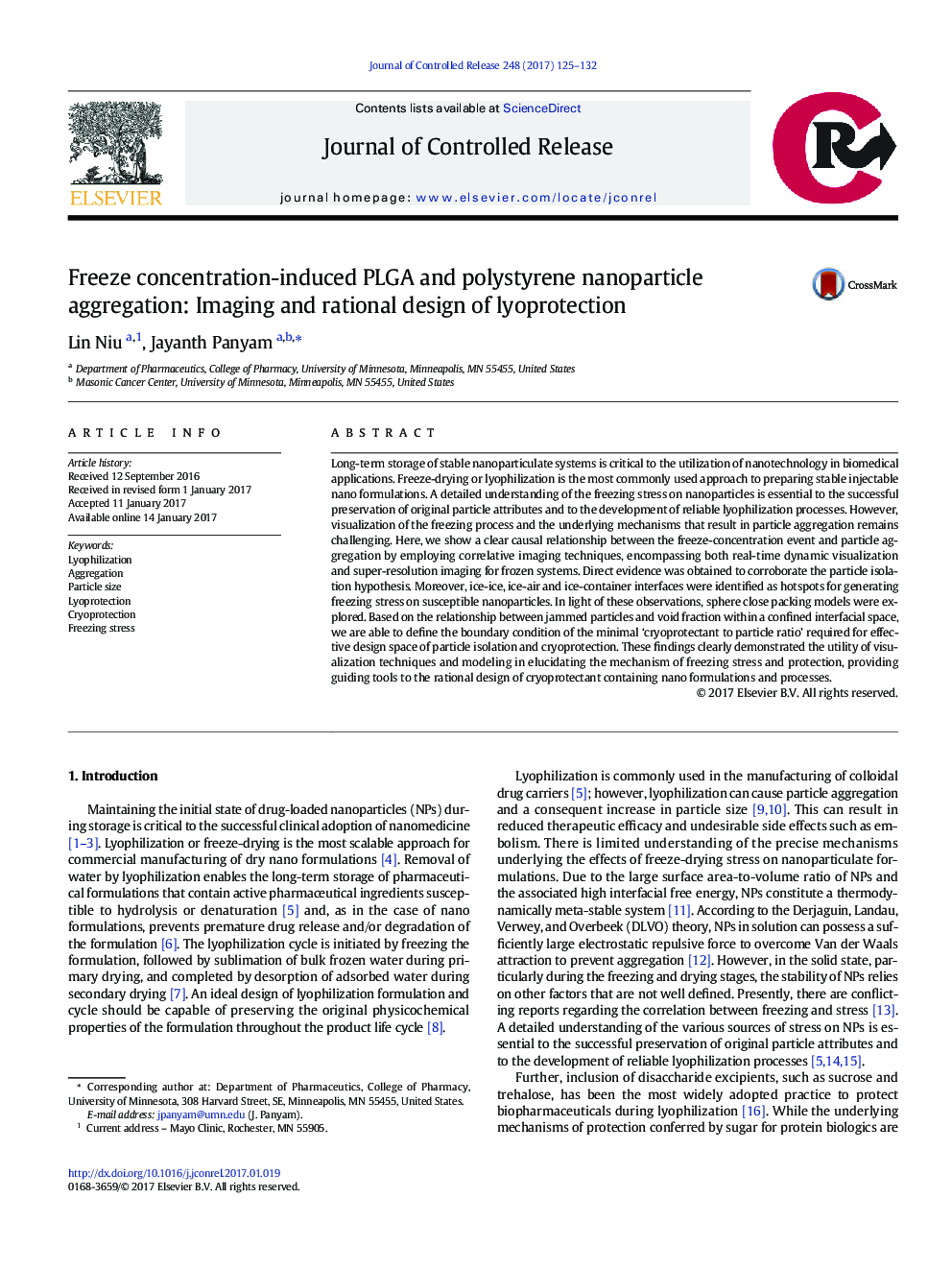| Article ID | Journal | Published Year | Pages | File Type |
|---|---|---|---|---|
| 5433929 | Journal of Controlled Release | 2017 | 8 Pages |
Long-term storage of stable nanoparticulate systems is critical to the utilization of nanotechnology in biomedical applications. Freeze-drying or lyophilization is the most commonly used approach to preparing stable injectable nano formulations. A detailed understanding of the freezing stress on nanoparticles is essential to the successful preservation of original particle attributes and to the development of reliable lyophilization processes. However, visualization of the freezing process and the underlying mechanisms that result in particle aggregation remains challenging. Here, we show a clear causal relationship between the freeze-concentration event and particle aggregation by employing correlative imaging techniques, encompassing both real-time dynamic visualization and super-resolution imaging for frozen systems. Direct evidence was obtained to corroborate the particle isolation hypothesis. Moreover, ice-ice, ice-air and ice-container interfaces were identified as hotspots for generating freezing stress on susceptible nanoparticles. In light of these observations, sphere close packing models were explored. Based on the relationship between jammed particles and void fraction within a confined interfacial space, we are able to define the boundary condition of the minimal 'cryoprotectant to particle ratio' required for effective design space of particle isolation and cryoprotection. These findings clearly demonstrated the utility of visualization techniques and modeling in elucidating the mechanism of freezing stress and protection, providing guiding tools to the rational design of cryoprotectant containing nano formulations and processes.
Graphical abstractDownload high-res image (92KB)Download full-size image
